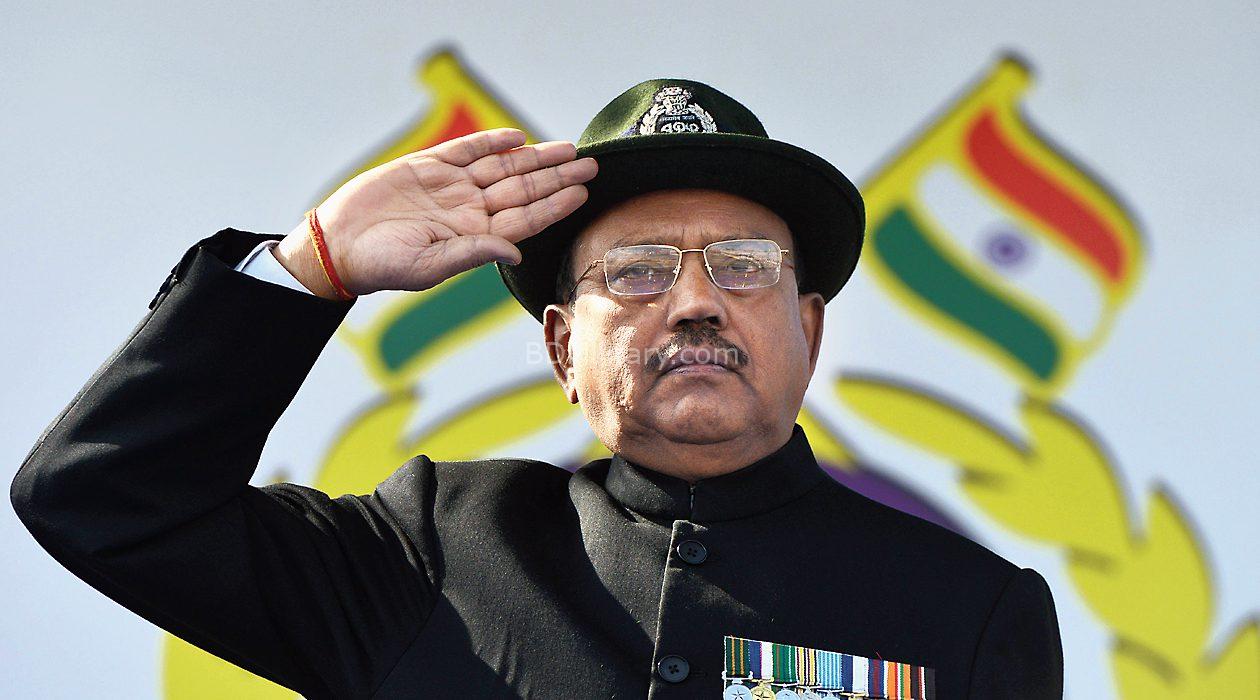From Intelligence Collapse to Strategic Isolation
Key Points
- India’s political and intelligence influence in Bangladesh has collapsed following the fall of the Awami League regime.
- The revolution dismantled India’s espionage network, forcing a total withdrawal of operatives and informants.
- Dhaka’s new leadership is pursuing balanced ties with China, Türkiye, Pakistan and the United States.
- Public sentiment and national pride make any pro-Indian alignment politically suicidal in Bangladesh.
- Any military adventure by India would face fierce resistance and catastrophic losses.
- Analysts believe New Delhi must now rebuild relations based on mutual respect, equality and restraint.
For more than fifteen years, India regarded Bangladesh as its most dependable ally in South Asia. Under Sheikh Hasina’s Awami League, New Delhi enjoyed extraordinary access to Dhaka’s political, security and economic spheres. The partnership extended far beyond diplomacy; it was an arrangement through which India exercised influence over key state institutions, border policies and even aspects of internal security. Many in New Delhi came to view Bangladesh not as a sovereign partner, but as a managed client state whose loyalty could be guaranteed through patronage and political support.
That illusion has now disintegrated. The fall of the pro-Indian Awami League regime has shattered India’s strategic dominance and exposed the brittle foundations of its Bangladesh policy. Public sentiment within Bangladesh, long resentful of perceived Indian interference, has hardened into open hostility. In Dhaka, New Delhi is now seen as a power that sought subservience rather than partnership, and whose heavy-handed involvement undermined Bangladesh’s sovereignty.
The Collapse of India’s Intelligence Network
One of the most consequential outcomes of the revolution was the collapse of India’s intelligence network inside Bangladesh. The Research and Analysis Wing (RAW) and the Intelligence Bureau (IB) once operated there with an extent of access unmatched in any neighbouring state. Through sympathetic figures in the Awami League and cooperative officials within the Directorate General of Forces Intelligence (DGFI), Indian operatives obtained a continuous stream of information about Bangladesh’s political opposition, media, security institutions and military procurement plans. For years, this intelligence cooperation gave New Delhi a decisive edge in shaping policy towards Dhaka.
When the revolution unfolded, that network fell apart almost overnight. Indian agents and intermediaries fled the country, informant chains disintegrated and communication nodes were dismantled by the new authorities. Within weeks, New Delhi’s most comprehensive foreign intelligence footprint had been erased. The collapse of India’s espionage architecture was as spectacular as its political downfall, leaving Indian agencies effectively blind in a country that once provided them with unfiltered access. The loss of human intelligence has forced India to rely on satellite imagery, intercepted communications and speculative media analysis, none of which compensate for the deep situational awareness it previously enjoyed.
A Crisis of Image and Leverage
The erosion of India’s intelligence presence has been compounded by a broader crisis of image and leverage. Across Bangladesh, India is now widely regarded as an overbearing neighbour that supported a corrupt, authoritarian regime for its own benefit. Even the informal track-two channels of communication—academic exchanges, business forums and think-tank dialogues—are viewed with suspicion. Indian media narratives attempting to discredit the new government have largely backfired, reinforcing the impression that New Delhi cannot accept Bangladesh’s independent course. With the Awami League discredited and its intelligence liaisons neutralised, India has been left without meaningful instruments of influence.
Faced with this reality, New Delhi’s policy choices are narrow and fraught. The most likely path is to wait and observe, maintaining diplomatic formality while avoiding overt provocation. This stance spares India immediate confrontation but concedes strategic initiative to others. Bangladesh’s new leadership is deepening ties with China, Türkiye, Pakistan and the United States, each eager to expand their presence in South Asia. China provides military hardware and infrastructure financing, Türkiye brings advanced UAV and aerospace technology, Pakistan quietly rebuilds intelligence and defence ties, while Washington sees Dhaka as an emerging regional partner in its Indo-Pacific calculus. In this emerging alignment, India risks marginalisation
Potential Measures India Might Attempt
Despite its current strategic paralysis, India may seek to apply pressure on Bangladesh through a range of limited or indirect measures. These could include manipulating water flows from upstream dams on shared rivers to create economic and agricultural stress, increasing tension along the border through incursions or harassment, attempting to use diplomatic influence to restrict arms sales to Dhaka, or conducting large-scale military exercises near Bangladesh’s territory to signal capability and resolve. Incursions into Bangladesh’s airspace could be used to probe air-defence readiness, while trade restrictions or disruptions in essentials such as rice, onions and cotton could be deployed to create internal economic pressure. Covert measures to cultivate favourable political actors or shape public perception, as well as targeted information campaigns, may also be attempted. All of these actions, however, carry severe risks: escalation, international condemnation, and the likelihood of reinforcing Bangladesh’s resolve and strategic independence.
Strategic Paralysis and the Futility of Force
The most reckless scenario—military intervention—is, in practical terms, unthinkable. Bangladesh is a nation of nearly two hundred million people, one of the largest and most densely populated in the world. Any foreign army entering its territory would face fierce resistance from regular forces, militia and civilians alike. Its geography—criss-crossed by rivers, wetlands and urban sprawl—makes manoeuvre and supply extraordinarily difficult. Modern asymmetric warfare, supported by anti-tank weapons, drones and precision munitions, would inflict heavy losses on an invading force. The Bangladesh Armed Forces are cohesive, modernising rapidly and deeply motivated by national pride. Even if an incursion were attempted, the invading troops would not be able to return unscathed. Beyond the battlefield, the political and diplomatic repercussions would be catastrophic: international condemnation, economic sanctions, and a region-wide backlash against India’s actions.
For New Delhi, therefore, coercion is not an option. The only viable path forward is one of restraint, introspection and renewal. India must recognise that the era of unilateral dominance in South Asia is over. Its neighbours, empowered by diversified partnerships and domestic confidence, will no longer accept patronising relationships. Bangladesh’s revolution has merely crystallised a broader regional trend: the rise of self-reliant states seeking balanced relations with multiple powers rather than dependence on one.
Amir Erez’s Assessment
Defence analyst Amir Erez, writing from Tel Aviv, describes India’s situation as “a self-inflicted strategic blindfold.” According to him, India’s intelligence losses in Bangladesh represent “the single most severe failure of New Delhi’s external operations in a generation.” He argues that India’s regional strategy collapsed because it was built on coercion rather than credibility.
“India’s agencies mistook access for loyalty,” Erez notes. “The day that access was withdrawn, the entire structure fell apart. Bangladesh is now a sovereign intelligence environment, and that changes the regional game permanently. For India, there is no quick recovery—only a long process of rebuilding trust.”
Erez concludes that India’s only realistic path forward is “to treat its neighbours as equals, not dependencies,” warning that any attempt at military intimidation would trigger a united regional backlash and accelerate India’s isolation.
Annex: Competing Narratives and Regional Myths
After the collapse of the pro-Indian Awami League regime, a surge of speculative narratives emerged in regional media. Among the most common have been claims that the United States engineered the political change in Dhaka or sought to establish a military base on St Martin’s Island in the Bay of Bengal. No credible evidence supports either assertion, and neither Washington nor Dhaka has indicated such intentions.
In practice, Bangladesh’s post-revolution diplomacy shows diversified engagement rather than alignment with any single power. Defence and industrial cooperation with China has expanded markedly, while relations with Türkiye, Pakistan and the United States have also grown. This balanced approach reflects Dhaka’s emphasis on strategic autonomy and its rejection of client-state politics.
Analysts view the persistence of these “go-to myths” as a feature of regional information competition—attempts to shape perception rather than record fact. The reality on the ground is that Bangladesh’s foreign and defence policies are now guided by national interest, not by external sponsorship or coercion.

Ayesha Farid is a regional security specialist focusing on South Asia, with over a decade of experience analysing inter-state tensions, cross-border insurgency, and regional power dynamics. She has worked with leading policy think tanks and academic institutions, offering nuanced insights into the complex security challenges shaping the subcontinent. Ayesha’s expertise spans military doctrines, border disputes, and regional cooperation frameworks, making her a vital contributor to BDMilitary’s coverage of South Asian strategic affairs. She leads the Geopolitics & Diplomacy section at BDMilitary. Ayesha holds a dual master’s degree — a Master in International Relations from the IE School of Politics, Economics & Global Affairs, Spain, and a Master of Public Policy from the Munk School of Global Affairs, University of Toronto, Canada — combining deep academic insight with practical policy expertise.



